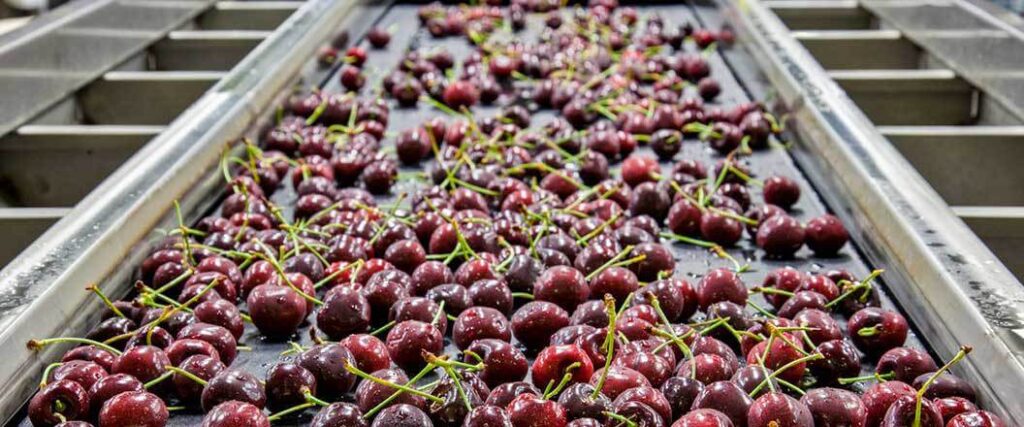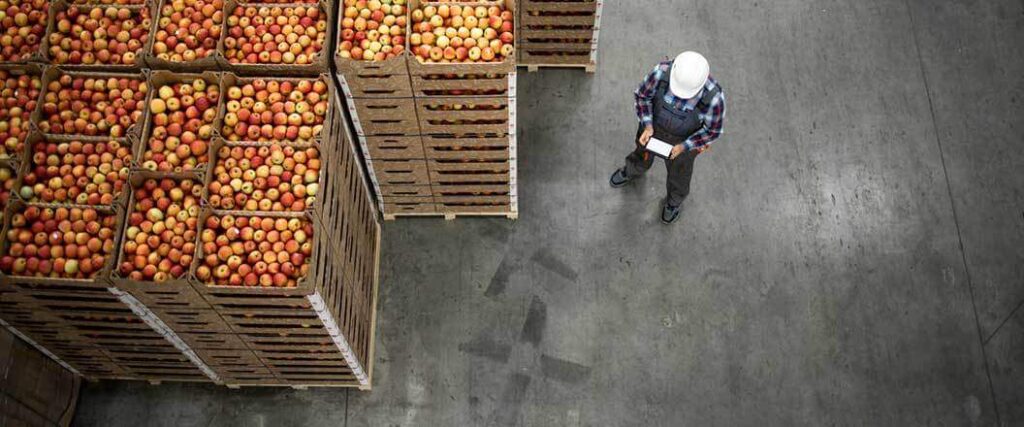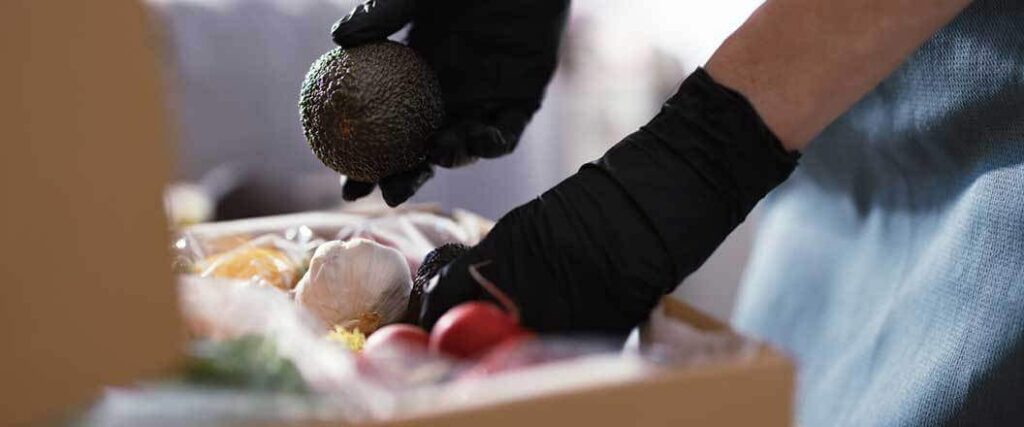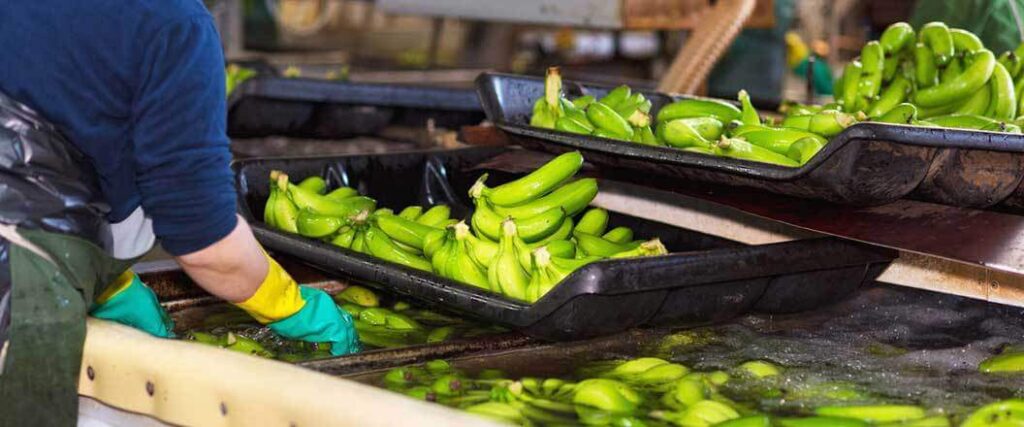Knowing how to export fruit is an important skill to have if you’re a farmer or company specializing in shipping fresh produce abroad. That’s because there are markets in other countries around the world that import U.S. fruit products. Because of such high demand, there is money to be made from exporting fruit to other countries. That said, exporting fruit has many challenges that you have to rise against and overcome.
The Food and Drug Administration (FDA) and the U.S. Department of Agriculture (USDA) regulate the export of fruit from the United States.. Additionally, you will need to abide by import requirements in the country of origin and make sure you pay the proper duties for your fruit exports and apply for preferential treatment under a trade agreement if one is applicable.
Our guide will show you how to export fruit by explaining all of the requirements that will be expected of you as an exporter.

There’s an extremely high demand for U.S.-grown fruit from countries all around the world. Many of the top countries that import U.S. fruit are also top U.S. trading partners. These countries include:
While these countries and many others import an assortment of U.S. fruit products, certain fruits are more sought after than others. In 2020, the top fruit products that were exported from the U.S. to other countries were the following:
To show just how much in demand these fruits were, the table below represents how much the U.S. exported each fruit in USD.
| Fruit | Value of Exports |
| Apple Exports | $899.3 Million |
| Grape Exports | $1.02 Billion |
| Orange Exports | $575 Million |
| Cherry Exports | $500 Million |
Sources provided by: The Packer, OEC World,
Whether you choose to import popular fruits like these or some other kind of sweet produce, you’re likely to find a customer willing to import a large quantity of fruit from you in another country.

When it comes to exporting food products like fruit, your goods must be healthy enough for consumption. Exporting bad fruit can cause those consuming it to get sick if the fruit is even edible at all. Sending fruit that’s not healthy enough for consumption will make you and the U.S. look bad.
There are two federal agencies that regulate food imports and exports to prevent an event like this from occurring. These agencies are the FDA and the Agricultural Marketing Service (AMS) which is an extension of the USDA. For you to successfully export your fruits to another country, you’ll need to make sure that your fruits are up to the specifications of these two agencies.
The last agency whose regulations you’ll need to be aware of is the U.S. Census Bureau. This agency keeps track of all exports leaving the country. While their regulations for exports of fruit are not hefty, you will need to follow them to export successfully.
The FDA and AMS do not have an extensive amount of regulations that they require exporters to follow when they send fruit outside the country. However, the regulations they do have for exporting fruit are fairly detailed.
Both FDA and AMS provide a vast array of certificates for agricultural imports, including fruit. To send fruit to another country, you’ll need to make sure you have some of the following certificates:
The non-manipulation certificate shows that a product, in this case, your shipment of fruit, was stored in the right conditions. Additionally, this certificate acknowledges that the container the product was transported in wasn’t tampered with. AMS is the agency that issues this certificate to exporters of fruit.
Certificates to a Foreign Government and Certificates of Exportability are issued by the FDA. Although they’re used for food exports, they can also be used for:
The certificate to a foreign Government states many things, but most importantly they state that any of the products listed above can be marketed and exported from the U.S. and to another country. As for the Certificate of Exportability, this certificate states the goods being exported can be exported from the U.S., but not marketed there.
To obtain either of these certificates, you’ll need to pay a fee for them. The price of the fee will change each time you obtain the certificates for the same product in response to the same request. Those fees are:
For your fruit export to travel outside the U.S. and pass the other country’s customs clearance process, you’ll need to have the AMS Non-Manipulation Certificate and at least one of the FDA's certificates.
Like the U.S., other countries have federal agencies that regulate food goods that come into their country. Some of these foreign agencies require their importers to only import from the publicly available Exporting Listing Module (ELM).
Many exporters of fresh fruit and vegetables join the ELM so that importers in other countries that operate under these constraints know that they can import food from them. While being a part of an export list is not essential, you’re fruit export business will be limited to who you can export to.
The ELM is kept up to date so that foreign importers can find current U.S. companies that they can import fruit and other products from. You can apply your fruit farming business to the ELM. That said, the ELM is updated every quarter, so you’ll need to apply by the following deadlines:
Being a part of the ELM will make the fruit export process much smoother and provide you with a wider variety of importers.
A certificate of origin is something that isn’t required but is often asked for by the importer of the goods. Certificates of origin certify that your fruit was U.S.-grown. The certificate can also help you and the importer apply for preferential tax treatment. We’ll discuss how to fill out a certificate of origin further when we show you how to apply for preferential treatment for your exports

Many importers use what are called HS codes to verify the duty rate applied to the commodity they’re bringing into their country. When exporting, you’ll provide a Schedule B Number rather than an HTSUS Code.
The purpose of a Schedule B Number is so that the U.S. Census Bureau can track the amount of traded goods leaving the U.S. - in this case, fruit. A Schedule B Number will be required if you’re shipping off goods that have a value over $2,500 or if you need a license to export your goods.
Fortunately, you won’t need a license to export fruits and vegetables. Therefore, you’ll only need to provide a Schedule B Number if it’s exactly at or above the value threshold. The following Schedule B Chapters are where you will find numbers for any of the various fruit products you want to export:
Your fruit exports will likely fall under chapters 8 and 20. At the beginning of each chapter is a disclaimer that will inform you what the numbers in the chapter don’t apply to. This will allow you to discern whether or not the number you chose will apply to your export of fruit or not.
Even with this assistance, discerning which Schedule B Number applies to your export is difficult to figure out because of how many there are. Consulting with an export consultant is a great way to resolve that problem.

Under most circumstances, you won’t have to pay any duties for your fruit exports. It’s the responsibility of the importer of your fruit to take care of this. However, if the importer of your fruit knows that their country and the U.S. are part of a free trade agreement, they will ask you to take the necessary steps to ensure the export is given preferential treatment.
Additionally, paying the duty for your export on behalf of the importer might be your responsibility based on the Incoterms you and the importer agree to. Incoterms are essentially the terms and conditions that importers and exporters agree to when conducting a sale. Some Incoterms place the responsibility of paying duty fees on the exporter.
Should the responsibility fall to you to pay the duties for your exported fruit, you will need to include the correct Schedule B Number with your shipment and the HS code of the country you’re exporting the goods to. If you’re unwilling to pay the customs duties for the importer, be sure to avoid using an Incoterms that will require you to do so.
Applying for preferential treatment under a normal trade or free trade agreement (FTA) is fairly easy to do. According to the International Trade Administration (ITA), the first thing that you have to do before applying is to determine if the goods are eligible for preferential treatment under an FTA, to begin with. To determine this, follow these three steps:
Determining that your fruit is made in the U.S. is simple if you’re the one growing them. However, if you’re sourcing from a supplier, verify that the farm your fruit was grown on was a U.S. location.
After you’ve done this, identify the ROO of the FTA you’re trying to apply your fruit shipment for. The ROO of an FTA agreement essentially sets certain standards that determine if a good is eligible for preferential treatment under the FTA. ROOs can vary based on the specific FTA that you’re applying for.
Goods that are classified as “whole obtain product” are easy to establish their origin. However, if they’re not, then you will need to defer to the ROO. After determining that your fruit import is eligible for preferential treatment, you’ll need to certify this fact so that the FTA rate is applied.
To certify this information, you will either need to provide an FTA certificate of origin for large shipments. What your certificate or origin will look like can vary based on what the FTA you’re applying for specifies. Certificates of origin can come in the following formats:
The buyer of your fruit can even provide you with a specific format for the certificate of origin. Usually, smaller exports will only need a certificate of origin information added to the commercial invoice. Larger forms, however, will require the use of a specific form or company letterhead.
What constitutes a large or small shipment can change based on the FTA you’re applying for preferential treatment under. Regardless of your certificate of origin format, you’ll need to provide the following information:
The U.S. might have FTAs with multiple countries, but not every agreement offers reduced or eliminated duties and tariffs for fruit exports. That’s why you should always check the stipulations of an FTA. We’ve listed some of the FTAs the U.S. has with other countries that provide preferential treatment to exported shipment of fruit:
Oftentimes, an importer in another country will let you know if their country and the U.S. is part of an FTA, but it’s good to know for yourself beforehand.
Whether you’re finding a foreign country’s HS code or trying to determine if the country you’re exporting fruit to is part of an FTA with the U.S., you’re likely going to need some extra help. A Customs Broker can help you complete tasks like these much more efficiently.
At Cargo Export USA, we can help you abide by all the regulations that you will be expected to follow when you export fruit. It doesn’t matter what part of the process you get stuck at, our team will provide you help along the way.
We even offer consulting sessions that you can schedule with any of our Licensed Customs Brokers. During a consulting session, our brokers will walk you through the entire process of exporting fruit.
Additionally, we offer a full suite of other services to help you arrange your shipment out of the country and to where it needs to be, including:
If you have questions about our services, simply call our team at 866-301-0635 to find out more about how we can help you.
Hello -
We are in the initial stages of seeing how we can export dried California orange peel to the UK. It is organic, and we would like to export it as an organic product. Is this something you could help us navigate?